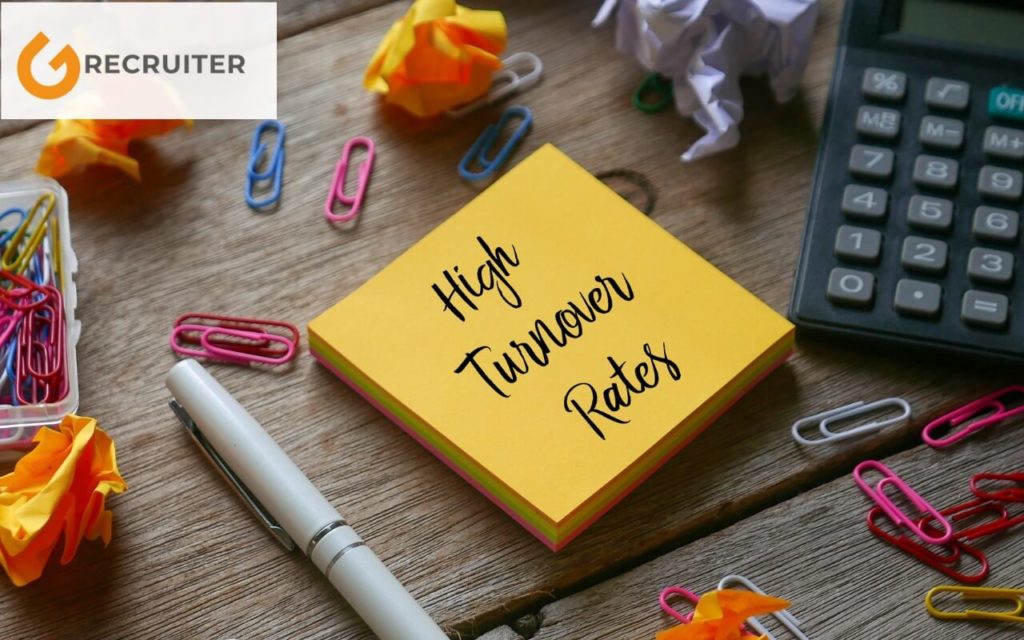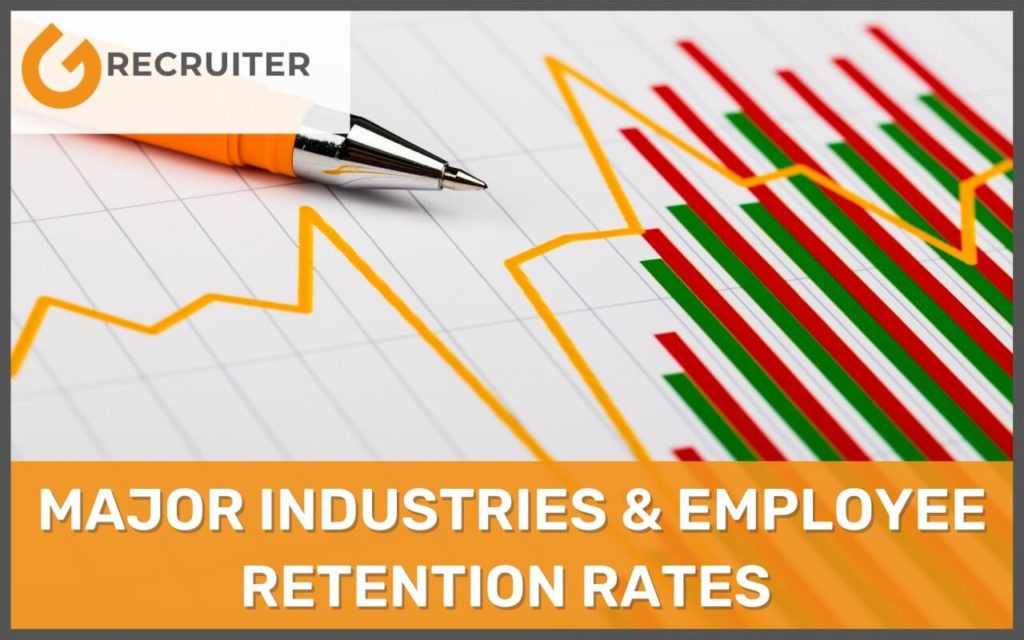Quick Navigation
What is employee Retention in HRM?
Employee retention in HRM is described as an organization’s capacity to prevent employee turnover, or the number of employees who quit their work, either voluntarily or involuntarily, within a certain period of time. Employee retention rate has a direct influence on the performance and success of a company.
How to Calculate Employee Retention Rate
Divide the number of employees that stayed with your firm for the full time period by the number of employees you had on day one to get the retention rate. Then divide that figure by 100 to get your staff retention rate.
The employee retention rate calculation for a specific time period might look like this in formula form:
Retention Rate Formula
(Remaining Headcount During Set Period ÷ Starting Headcount During Set Period) x 100
Let’s imagine you wanted to know how long your employees had been with you in the previous month. You had 30 workers on the first day of the month and 28 employees on the last day of the month, as two team members departed your company to seek other possibilities. Your staff retention rate would be (28/30) x 100, or 93.33 percent, in that case.
Average employee retention rates Globally
According to the Bureau of Labor Statistics report from 2021, the total turnover rate is 57.3 percent, but that number reduces to 25% when only voluntary turnover is included, 29 percent when involuntary turnover is considered, and just 3% when only high-performers are considered.
Employee Retention Rate by Industry
In 2019, the Bureau of Labor Statistics (BLS) reports the following figures. As you can see, government employment had the lowest number of separations/turnovers compared to the entertainment and hospitality industries, which had the largest turnover.
| Industry | 2016 | 2017 | 2018 | 2019 | 2020 |
| Total | 42% | 43% | 44% | 45% | 57% |
| Total Private | 47% | 47% | 49% | 49% | 63% |
| Mining and logging | 59% | 48% | 54% | 48% | 54% |
| Construction | 58% | 61% | 57% | 65% | 68% |
| Manufacturing | 27% | 30% | 32% | 31% | 44% |
| Durable goods | 25% | 27% | 28% | 28% | 41% |
| Non-durable goods | 29% | 36% | 38% | 36% | 48% |
| Trade, transportation | 46% | 45% | 48% | 49% | 60% |
| Wholesale trade | 27% | 27% | 29% | 29% | 37% |
| Retail trade | 54% | 53% | 58% | 58% | 69% |
| Transportation, warehousing | 40% | 40% | 44% | 45% | 59% |
| Information | 33% | 35% | 37% | 38% | 44% |
| Financial activities | 26% | 28% | 27% | 28% | 31% |
| Finance and insurance | 23% | 25% | 24% | 24% | 25% |
| Real estate and rental | 35% | 37% | 35% | 39% | 49% |
| Professional services | 64% | 63% | 63% | 63% | 69% |
| Education and health | 31% | 33% | 34% | 33% | 44% |
| Educational services | 29% | 29% | 30% | 29% | 42% |
| Health care | 31% | 33% | 34% | 34% | 45% |
| Leisure and hospitality | 75% | 74% | 77% | 79% | 130% |
| Arts and entertainment | 81% | 84% | 88% | 79% | 129% |
| Accommodation and food | 74% | 72% | 75% | 78% | 130% |
| Other services | 39% | 45% | 44% | 43% | 67% |
| Government | 18% | 18% | 18% | 18% | 24% |
What is employee turnover?

The number of employees that leave your company in a certain period of time is referred to as staff turnover.
When you have a high staff turnover rate, it signifies that a large number of people leave your company in a short period of time. Low staff turnover indicates that your workforce is relatively steady and that your employees are loyal to your company.
What is the average staff turnover rate?
It’s important to be aware of your company’s worker turnover. It’s also important to remember that high employee turnover isn’t always a bad thing, and low staff turnover isn’t always a positive thing.
Let’s take a brief look at what a turnover rate reveals about your company before we discuss how to calculate it.
Why do employees leave?
Employees quit for a number of reasons, including a lack of cultural fit, an uncomfortable work environment, or below-average pay, particularly among high performers and achievers. However, impartiality is required for your HR staff to see that poor people management is a primary contributor to most turnover situations.
One method to illustrate this is by how managers teach their personnel. Employees who do not receive effective coaching retain the status quo and do not enhance their work performance, which can lead to them being unproductive or feeling inadequate. In any case, it may have a detrimental influence on individual employees’ growth and performance, as well as teams within a business.
Employees may also believe that the obligations assigned to them do not meet their expectations, owing to hazy talks about the job’s responsibilities during the interview stage.
Employee relations may be hampered as a result of the uncertainty and mistrust, presenting another stumbling block in talent retention. In severe circumstances, employees may be treated unfairly, such as when favors are given or when the blame game is played in the workplace, which may enrage members of the organization.
The cost of high staff turnover
We’ve previously established that terminating workers may be costly to your company, given that you spent time and money hiring, training, and certifying them throughout their employment. When an employee resigns, those investments evaporate into thin air, while replacing former staff may require you to spend more money on job advertising and other recruitment operations.
Overall business performance
According to research on the influence of staff turnover on performance, there is a perceived degradation in profit margin and customer service as a result of employee turnover.
The concept is that when good employees leave and less experienced workers remain, the quality of business solutions and service supplied to consumers suffers, because customers develop attachments to specific personnel inside the organization. When a client connection is harmed, the whole business situation may be jeopardized.
Daily task management
Aside from quality difficulties, personnel turnover has an impact on the amount of work completed. According to the Encyclopedia of Business, teams with significant employee turnover may find it difficult to fulfill daily duties or activities, especially if there is no effective coordination or information flow between previous and present personnel.
Company image
A high attrition rate might harm a company’s reputation because potential workers may be concerned that individuals are leaving.
Recruiters admit that matching quality applicants to any organization with a history of higher-than-normal turnover is difficult.
Team dynamics
Changes in the staff lineup on a regular basis might have a negative impact on a team’s capacity to build rapport among its members. It may be exceedingly difficult for teams to adjust to the work patterns of a new employee recruited to replace someone from their own group, especially if the new person is brought in from outside the organization.
Productivity and continuity
Due to staff departures, individual and team productivity may suffer. For one thing, the new employee must go through a period of adjustment in the workplace, which implies that tasks may take longer to complete for the new worker. As a result, there may be delays within teams that rely on their inexperienced members to assist them complete tasks.
A high turnover rate may also influence the continuity of service to clients farther down the company operations chain, especially for organizations in customer-oriented sectors. When your most senior workers go, they leave behind their knowledge and other internal systems that enable them to function successfully.

Why not all staff turnover is bad
Given all of the negative consequences of employee turnover, you might be shocked to find that some types or amounts of turnover can be beneficial to a company’s bottom line. Internal turnover, for example, which is the transfer of individuals from one project or role to another, can be beneficial since it allows you to keep your highly talented and trained staff within your organization.
The trick is to transform employee turnover into a chance to strengthen your recruiting and management strategies, as well as a way to help your company grow and flourish.
Improve your talent
A little turnover might be beneficial if it helps you to get rid of unproductive personnel and replace them with people who can bring value to your company. It’s a tactic that worked well for General Electric and its former CEO, Jack Welch, who made replacing people in the lowest 10% of the workforce part of the company’s yearly performance policy. For many years, GE was an industry leader and a prosperous business.
More companies are following suit today, using employee ranking to further identify the top 20% and middle 70% of their workforces, which they utilize to determine employee salary and training advantages.
Prevent complacency
This has to do with the attitude of certain employees, who don’t work hard enough to stay up with the company’s objective of constantly trying to improve its goods or services.
Because they are too comfortable with their existing status or position, such personnel are unwilling to move things to the next level. A stagnating company and workforce, on the other hand, might be a lousy prescription for corporate success.
Broaden your perspective
Bringing on new workers provides you the opportunity to meet a fresh generation of thinkers and doers who may bring a unique set of insights not found in your present team.
A varied workforce can help you achieve the balance you need to honestly assess which ideas can help your company develop. Your new workers may also have relevant experience from other jobs that might assist your organization form new paths.
What is a good employee retention rate?
Employee retention rates vary from Industry to industry. However, on average, an employee retention rate of 89% or higher is considered to be a good retention rate.
What is a low employee retention rate?
Low employee retention rate means that people you hire do not stay in the organization for long. Generally, 60% or lower is considered to be a low employee retention rate.
Why employee retention is low?
There could be various causes of low employee retention rate including limited career growth, low salary, poor management, micromanagement, poor work life balance and more. Address these issues to solve low employee retention problems.
Which industry has the highest employee retention rate?
Generally, the stable industries have higher employee retention rates. E.g. Government, Insurance, Finance, and education sectors have highest employee retention rates.
Which industry has the highest employee retention rate?
Low Employee retention rates are commonly seen in these industries : hospitality, food manufacturing, Retail and FMCG.
What is the meaning of employee retention rate?
Employee retention rate is a measure of people employed versus the length of their stay in the organization as an employee.









